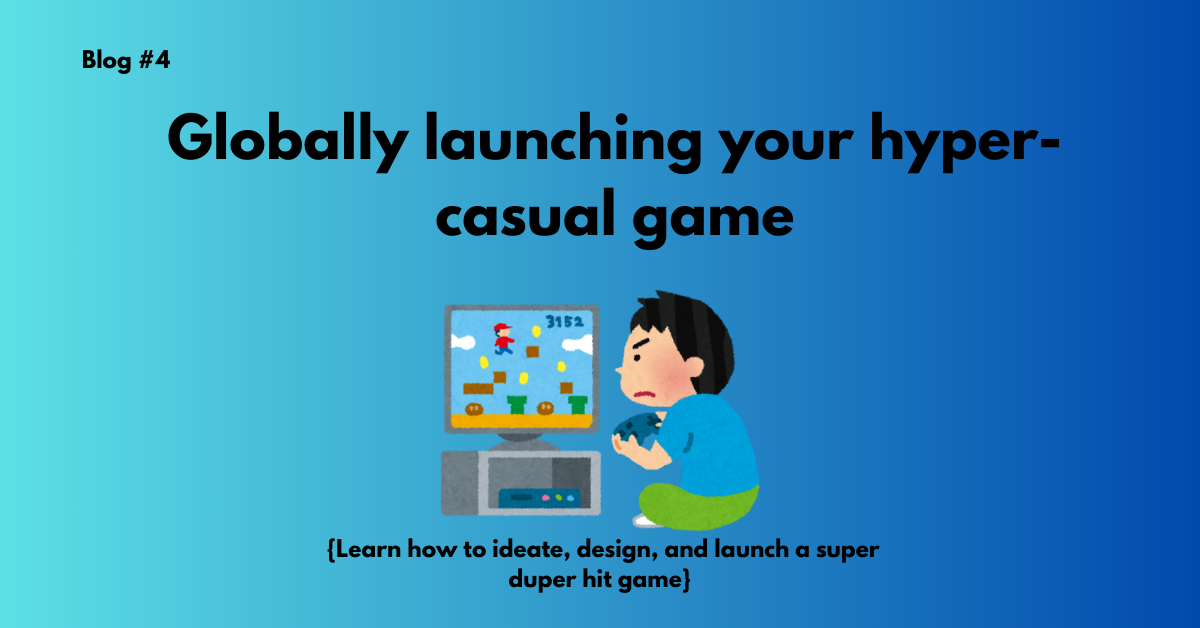
In this course on creating successful hyper-casual games, we’ve already covered the concept phase, marketability testing, and soft launching. Now it’s crunch time – you’re ready to launch your hyper-casual on a global scale.
For many hyper-casual game developers, partnering with a publisher like Supersonic, Crazygames, or RJgames is often the best approach to achieving success and climbing the top charts.
Other developers, particularly those with more experience or a small team, may go solo and launch the game independently.
Whichever path you take, this session will guide you through what’s required to successfully launch your game on a global scale.
Three launch strategies to propel your hyper-casual game to the top of the charts
Getting your game to the top isn’t just about having a great concept or design – you also need to launch it effectively. One common mistake we see from hyper-casual developers is using the same launch strategy for both in-app UA networks and social platforms. These should be approached differently.
In this blog, we focus on UA for ad networks and explore various strategies for globally launching your hyper-casual game.
The strategies are divided into three categories: Conservative, Aggressive, and Standard. Choosing the right one depends on your budget and the level of risk you’re willing to take. Let’s dive into each strategy.
Conservative
A conservative launch strategy involves setting a small budget cap and using high bids, adjusting both over time based on LTV and your scaling speed. While this approach reduces the risk of overspending or losing money, it requires close monitoring and frequent optimization to stay within the budget. The manual effort involved increases the chance of errors, and the low budget typically slows down the scaling process.
If you can’t afford to start with a larger budget or want to extend the soft launch phase, a conservative strategy can help you control spending. However, it slows down how quickly you can gather insights and optimize for scaling.
Aggressive
To launch your game with a more aggressive strategy, set both high caps and high bids from the start. Once you reach the top of the charts, adjust to ensure profitability. This approach boosts your game’s organic uplift by securing a higher chart rank, which can enhance marketing efforts and build brand awareness for future titles. For studios or developers with ample resources, this aggressive tactic accelerates your game’s rise to the top, even if it means losing money initially. However, this strategy carries risk, as it may not be profitable early on.
Standard
A standard launch strategy is ideal for most hyper-casual games, striking a balance between caution and risk. Based on insights from testing and soft launches, start with high caps and target bids, and adjust your campaigns if traffic is insufficient.
After 1 to 3 days, refine your bids as you learn from the campaign’s performance, and consult your ad network for recommendations to pinpoint your optimal bid quickly.
To maximize IPM, prioritize launching in Tier 1 countries like the US and other regions that showed strong IPM during the soft launch. If previous titles or your soft launch didn’t provide enough data, begin with the US market. Timing is also key—Fridays and US rush hour (UTC 18:00-22:00) often yield the best results.
Within a week, you should have enough data to determine whether the campaign can scale or needs adjustments. If tweaks are necessary, evaluate your creatives and in-game metrics, such as playtime and retention, to ensure effective monetization. This will allow you to afford higher bids and optimize performance.
This strategy works well for most hyper-casual games, offering a sweet spot for rapid learning, efficient improvement, and ultimately, increased profits.
Unleash the power of playable ads in your global launch!
In the second half of this session, let’s dive into designing playables that maximize the scale of your UA campaigns for a successful global launch.
Playable ads are key during a global launch, not only driving downloads at scale but also offering valuable insights into your creative strategy through in-ad metrics like engagement and conversion rates (we’ll cover those shortly).
Over the next few minutes, We will walk you through some of the best design practices we’ve seen deliver amazing results for playable in global launches.
Grab users’ attention with an engaging tutorial
The tutorial is the first part of your playable that users interact with, and it should balance informing them how to play while demonstrating the mechanics.
Hyper-casual games typically feature a single mechanic, so it’s crucial to ensure users clearly understand the mechanic and know what will happen when they begin interacting with your playable.
For example, a common test is removing visual distractions, such as obstacles and background elements, from the creative. This keeps the focus solely on the gameplay and mechanics, helping users understand how to play in less than three seconds.
Entice users with engaging gameplay in your playable
When designing playables, you need to strike a balance between keeping users engaged and leaving them wanting more, so they feel tempted to download the game.
We recommend keeping the gameplay in your playable to 15 seconds or less. This gives users a taste of the experience while still leaving them eager to play more. If you’re showcasing real gameplay, consider testing different elements.
For instance, you could experiment with various levels of difficulty settings to see what performs best. The gameplay that resonates most with users often depends on the genre – for example, playable decision-making games usually focus more on visuals and storylines than other genres.
Seal the deal with a strong-end card or CTA
To get users to download your hyper-casual game from the app store, strike a balance between avoiding irritation and ensuring a smooth experience.
Your goal is to guide them there as quickly and with as little friction as possible. Test different methods for directing users to the store from your playable ad. For example, you can try using a simple end card that they can tap to access the store or offer incentives, like an extra life for installing and starting the game.
That’s all for now. Good luck with your game launches, and stay tuned for new blogs in the future!
For more good reads, go to our other blogs on Initiating a Soft Launch


